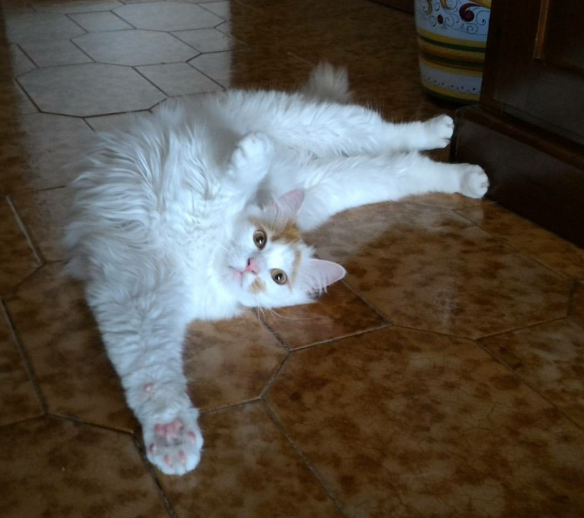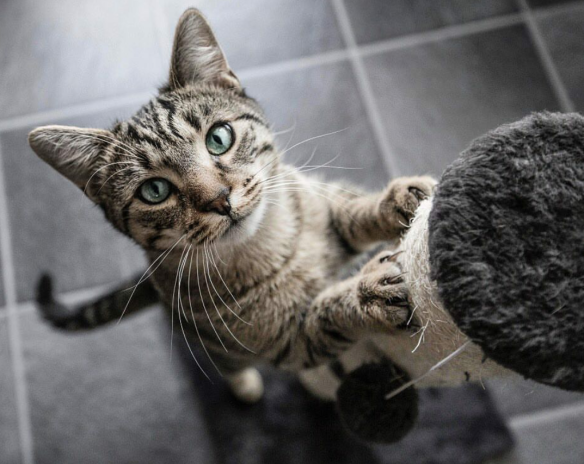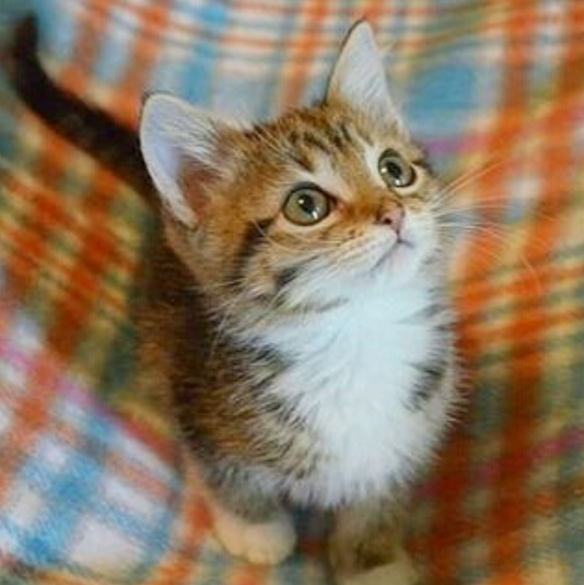In honor of the Copperhead living in the bushes around my office, I figured snakes the time to talk about snakes -alright I know…all bad wordplay aside, snakes are a serious concern. Living in a region of the US that has several varieties of venomous snakes, I am always on the lookout for slithering neighbors around my house, office and often on the walking trail. But being a pet mother and pet safety instructor I am always watching. I can understand what a snake is but our pups are genuinely curious, learning by touching, sniffing, licking and do not always understand when they could be in danger.
The most lethal aspect about a venomous snake is not that they can inject you with poisonous venom, instead it is the fact they are often hidden. Hiding away in the yard clippings for the compost, seeking refuge in the wood pile, camping out in the cool shade of the bushes near the deck or wandering their way through the border grass and ivy so often used for landscaping. None of these places make their long moving bodies visible.
Worst part? These are places we reach, step, move and touch without looking. They are also places of great interest to the sniffing, licking, touching, curious pups we parent.

Copperhead Snake
Majority of snakes try to retreat when they are encroached on, whether this encroachment happens by accident or not, the snake’s first reaction is often to get away. But there are some venomous snakes who get defensive, hold their ground and are more likely to strike.
Certain snakes, whether bumped on accident by your pooch’s paw or not, have a high probability of biting. In North Carolina, the Copperhead and Cottonmouth are quickest to strike and the Pygmy Rattlesnake normally attempts to slither away, but if further bothered, will quickly attack.
You can easily identify venomous snakes by these markers, according to the North Carolina Museum of Natural Sciences:
- A pit between the eye and nostril and the scales on the underside of the tail are not divided
- No pit between the eye and nostril and most scales on underside of tail are divided
- Tip of the tail has a “rattle” or “button”
- Top of head with large symmetrical plates
- Top of head with irregular, fragmented scales

Cottonmouth Snake
When you spot a venomous snake, you have time to assess and move away. But dogs walking in the border grass and accidentally waking a Copperhead, do not have the same time to move away. According to PetTech, the first international training center for pet first aid and CPR for cats and dogs, the majority of snake bites “occur on a dog’s head, neck, front legs and paws because they investigate their world with their nose, head and paws. Bites to the head and neck can become very serious because of the potential to interfere with breathing.”
What you do in the first few moments of a venomous snake bite can result in the life or death of your pup. What then can be done? Aside from the basics of prevention- making sure you never let your dog walk in tall grass, ivy, get into bushes, under the porch or into the woodpile, snakebites may still occur regardless of how careful you might be.
Once bitten symptoms will immediately start to occur.
Signs venom has been injected include:
- Bruising
- Swelling
- Bleeding around fang punctures.
Other signs include:
- Excessive salivation
- Vomit
- Weakness or nervousness
- Convulsions
Take immediate action to restrain, muzzle and immobilize your dog, keeping the bitten limb level with the rest of the body if possible. The sooner you can get our pup still the slower venom will spread giving you a better chance to save your dog’s life. Treat for shock and begin transportation to a vet as soon as possible.
Call the vet on the way to let them know the situation so they can be ready and waiting for you when you arrive. Do not waste a second of time getting your pet in the car and to the vet. After a venomous snake bite, dogs need to be monitored for 24 hours to ensure no further complications or infections occur.
Shock management, restraining, muzzling and snakebites are all topics covered in the PetTech first aid programs. Summers are great for hikes, long walks, trips to the mountains and even just enjoying a stay-cation in your own backyard. But nowhere will you be completely snake free. It is important to remember that even after killing a venomous snake, the snake can still possess the nerve reflex to bite.
Taking a pet first aid class today will help prepare you for a snake bite situation in the future. You never want to be sitting there wishing you knew what to do. Be proactive in your safety and the safety of the four-legged children in your family.
Enrolling in a PetTech PetSaver class will give you all the tools you need to keep your pets happy, healthy and alive during these snake infested summer months.
To find our more information on how you can help improve the quality of your pet’s life visit Nana’s Pet First Aid & CPR.

 My team and I were deciding on where to volunteer, there are so many choices, among them The Charlotte Humane Society and Animal Care & Control and ultimately my sitters chose Animal Care & Control and I was thrilled. Animal Control often gets a bad wrap but after spending the day with their team, I can confidently say, they are one of the biggest pet advocates in the city.
My team and I were deciding on where to volunteer, there are so many choices, among them The Charlotte Humane Society and Animal Care & Control and ultimately my sitters chose Animal Care & Control and I was thrilled. Animal Control often gets a bad wrap but after spending the day with their team, I can confidently say, they are one of the biggest pet advocates in the city.
 was leaving, “I would sit in my car and cry in the parking lot for ten minutes after I left. I just felt so bad, how could you not?” Eventually she was able to turn her sad frustration into a positive experience. She has made it her mission to bring as much joy to the dogs she walks during the time she has with them. And what more could you ask for in a volunteer?
was leaving, “I would sit in my car and cry in the parking lot for ten minutes after I left. I just felt so bad, how could you not?” Eventually she was able to turn her sad frustration into a positive experience. She has made it her mission to bring as much joy to the dogs she walks during the time she has with them. And what more could you ask for in a volunteer?
 to become regular, long-term volunteers. We want to continue to help give back to the community in the best way we know how, by loving on and caring for pets in whatever capacity we can.
to become regular, long-term volunteers. We want to continue to help give back to the community in the best way we know how, by loving on and caring for pets in whatever capacity we can.









